Development of a Generic Mathematical Framework for Continuum Robotics Modeling and Simulation
Matlab package for continuum robotics modeling and simulation. Convenient for modeling continuum and flexible robots in various applications such as minimally - invasive medical/surgical interventions.
Continuum robots: Continuum robots do not contain rigid links and identifiable rotational joints. Instead the robot bend continuously along its body via elastic deformation.
Application: Continuum Robots have many excellent features such as inherent compliance, small form factor, and lightweight that allow for smaller surgical incisions, less trauma, and safe procedures (e.g., minimally invasive surgery). In order to plan and control the motion of continum robots, we need to establish the mathematical relation between actution and deformation behavior (robot motion) of the robots.
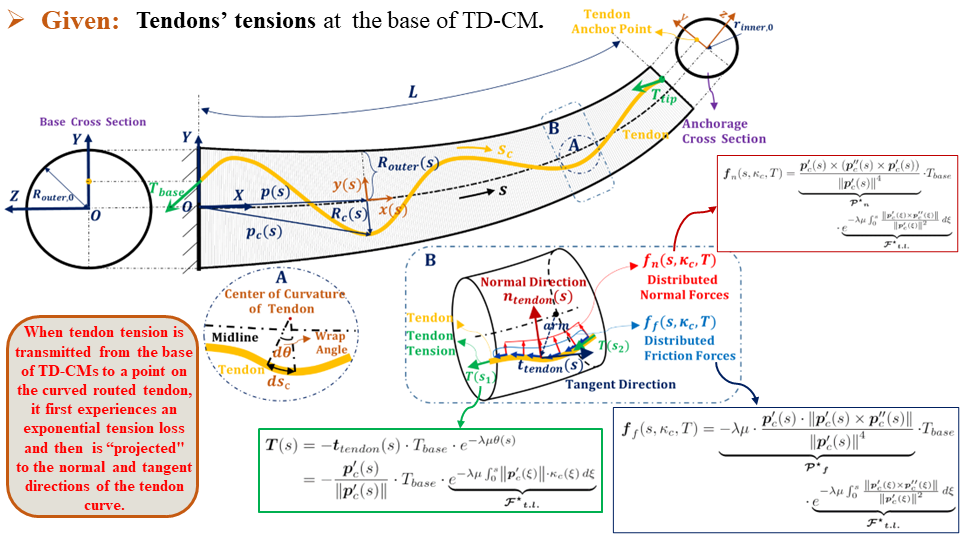
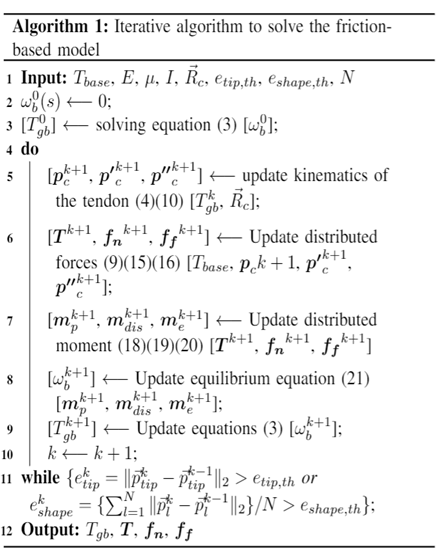
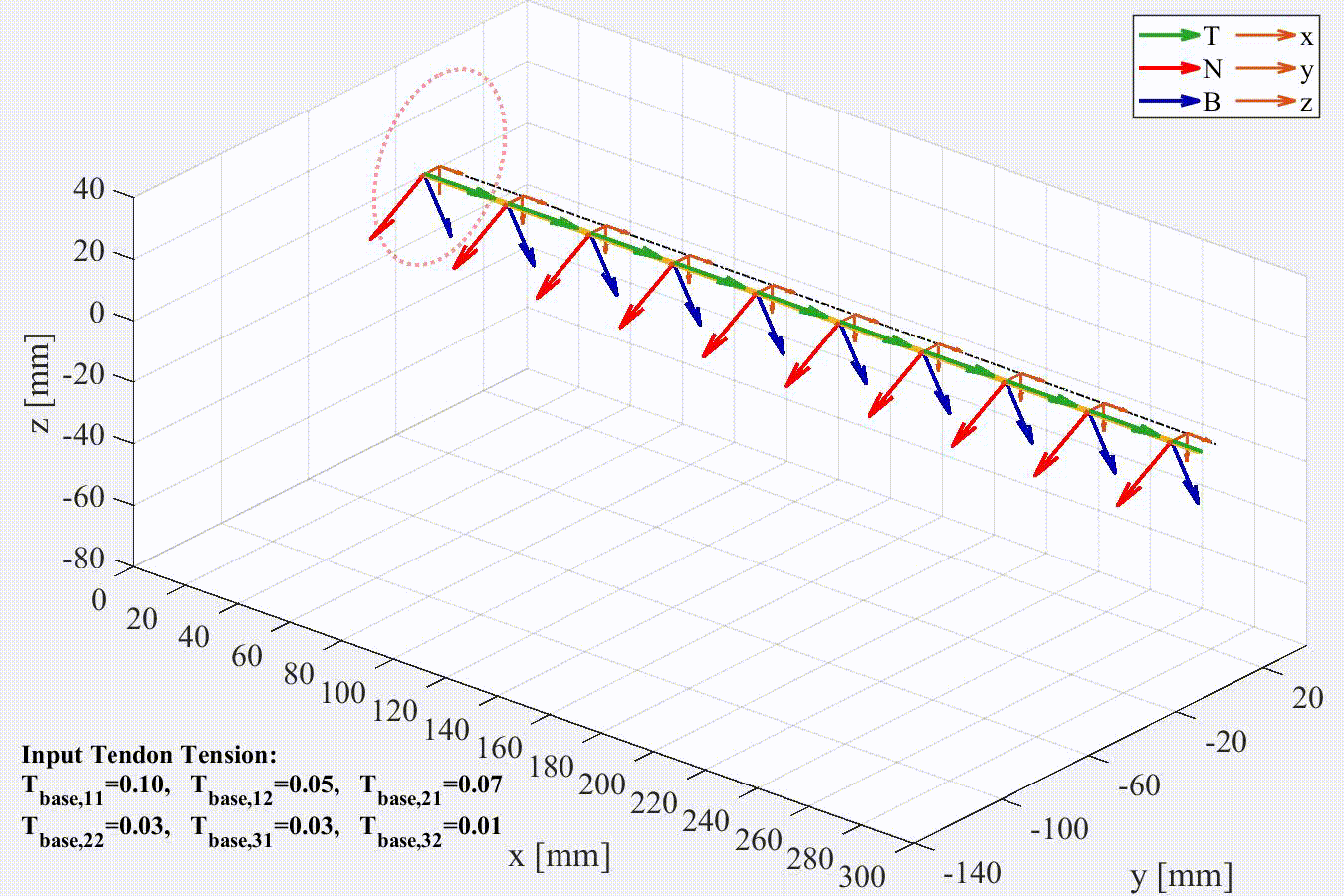
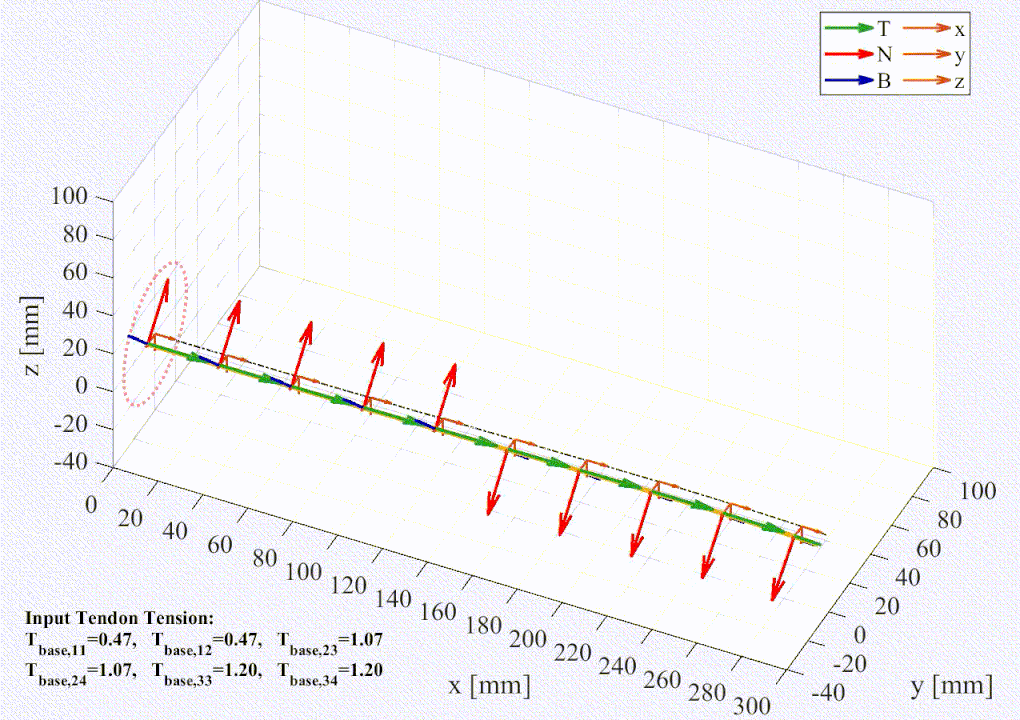
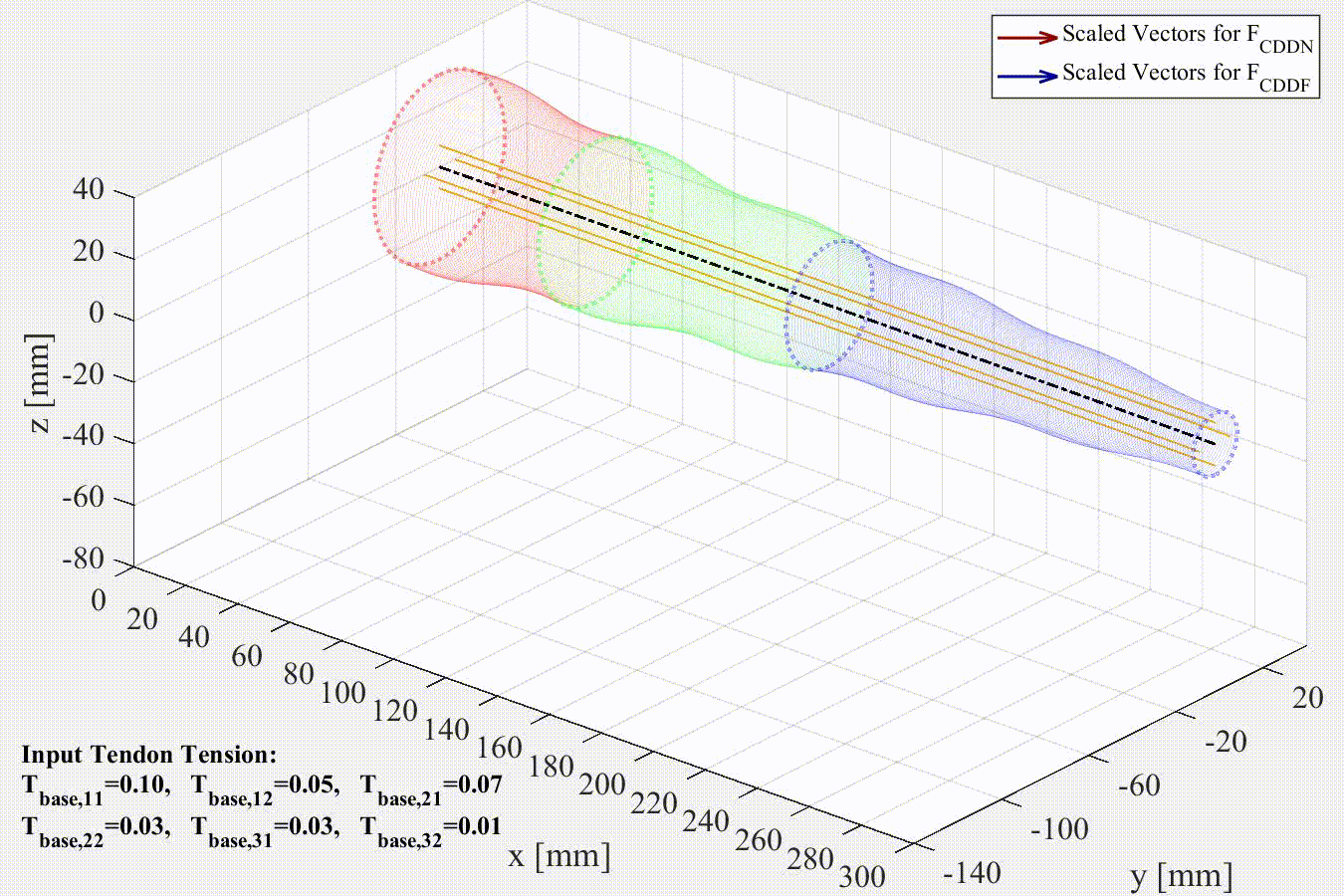
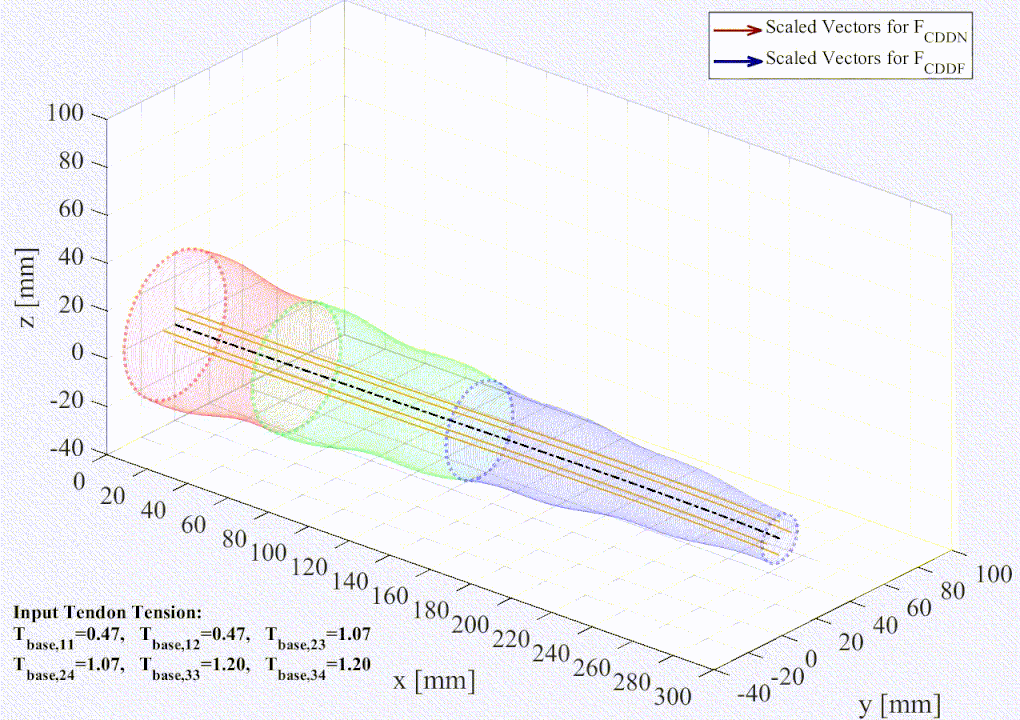
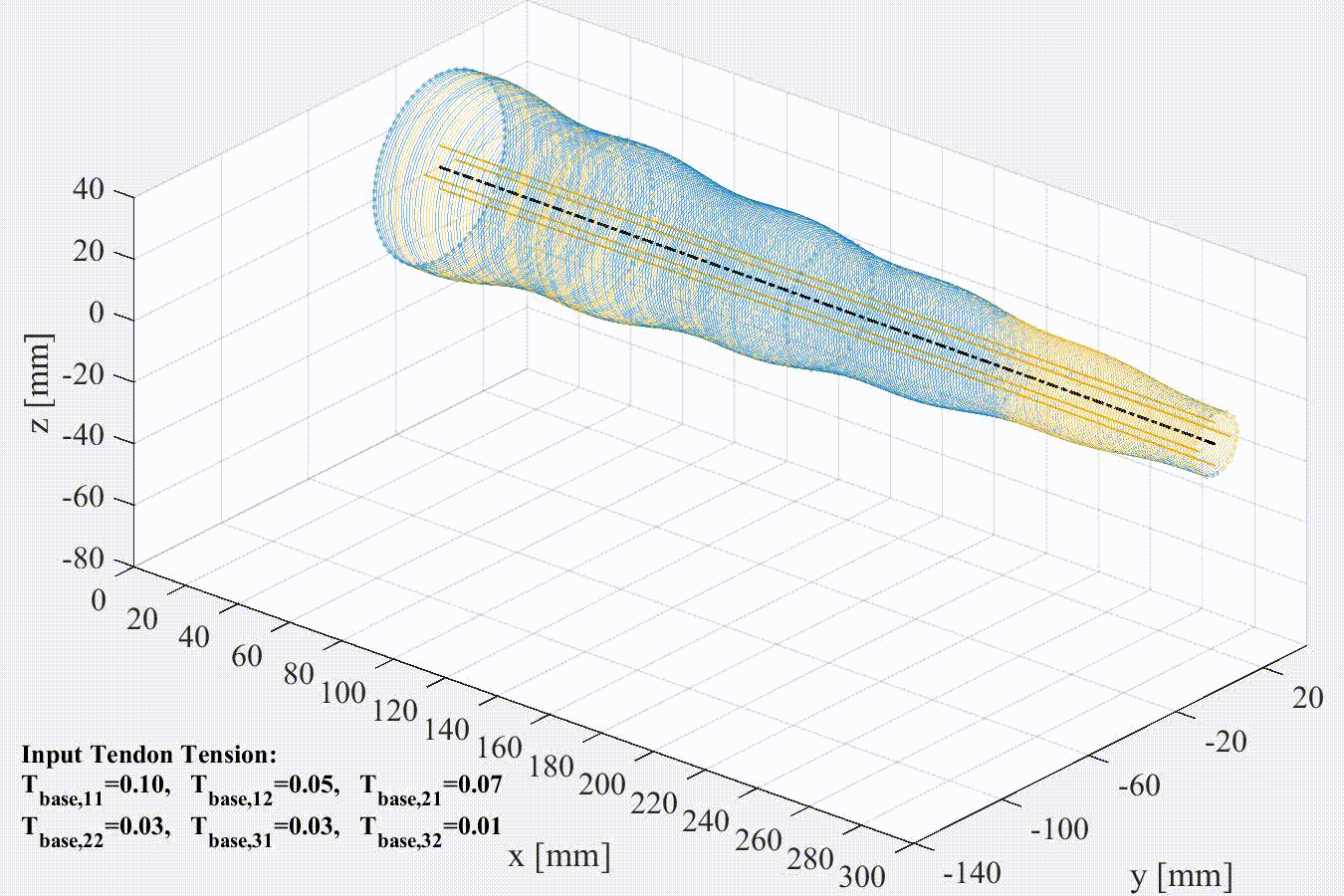
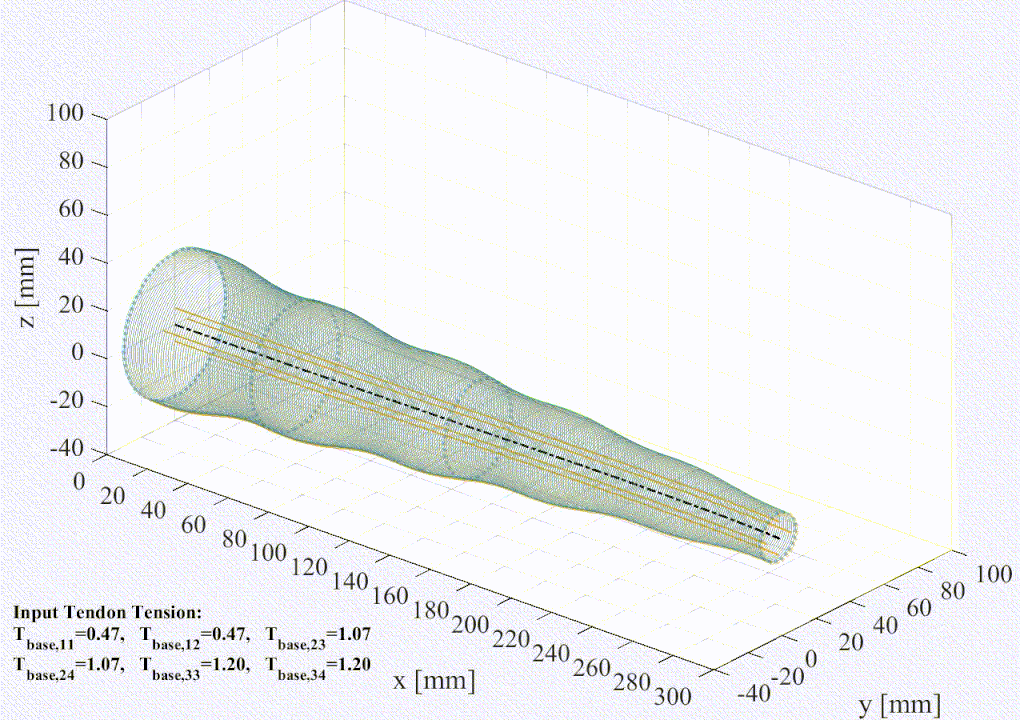







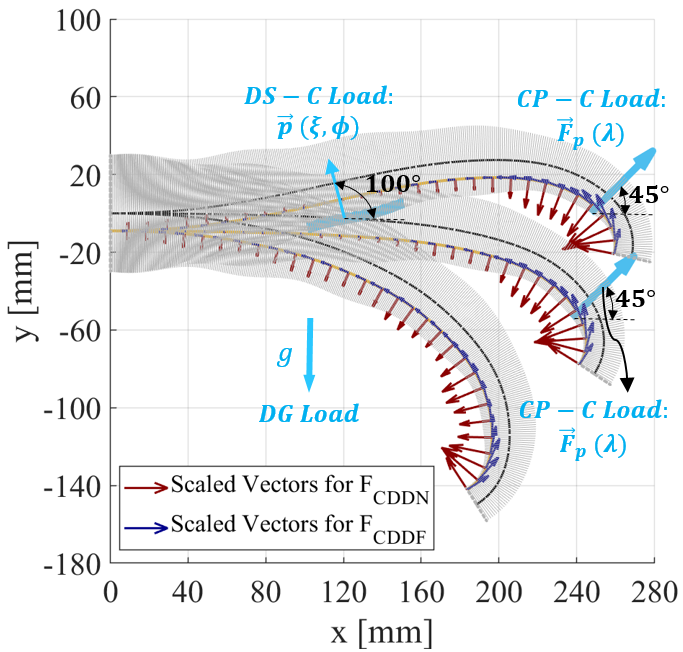
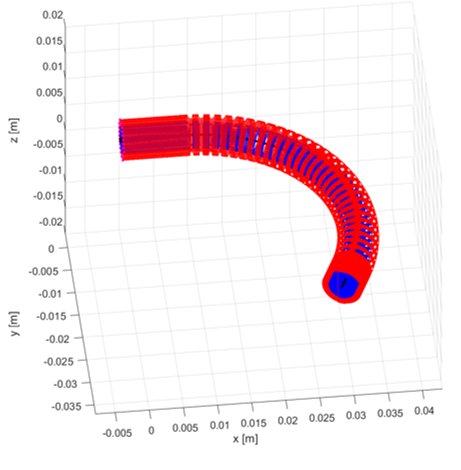
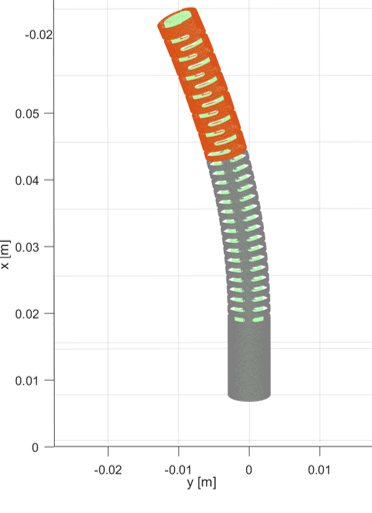
Modeling Features: the proposed modeling framework is derived based on a new mathematical formulation that uses three physically-intuitive generic functions to describe internal distributed forces on a generic tendon routing. It also introduces new concepts of '’tension loss factor’’ and ``projection factor’’ to provide insights of tendon-tension transmission loss in TD-CMs. This framework can be easily incorporated in the Cosserat rod theory, which makes it more generic, physically-intuitive, and extendable. It also quantitatively visualizes and provides an intuitive understanding of deformation behavior, actuation, external contact loads, generic tendon routing effects, tension loss, and distributed internal forces in continuum robots. The proposed formulation can account for distributed friction forces/moments along the tendon path that has been typically ignored in the previous modeling in the literature.
Algorithm Features: It can model and solve the entangled and unknown correlation between the generic tendon routing, distributed friction forces, distributed normal forces, tension loss along the routed tendon, and planar deformation behavior of continuum robots solely relying on known actuation input(s). The proposed algorithm (i.e., Algorithm 1) provides a way to capture the three phases of hysteresis behavior observed in continuum robots.